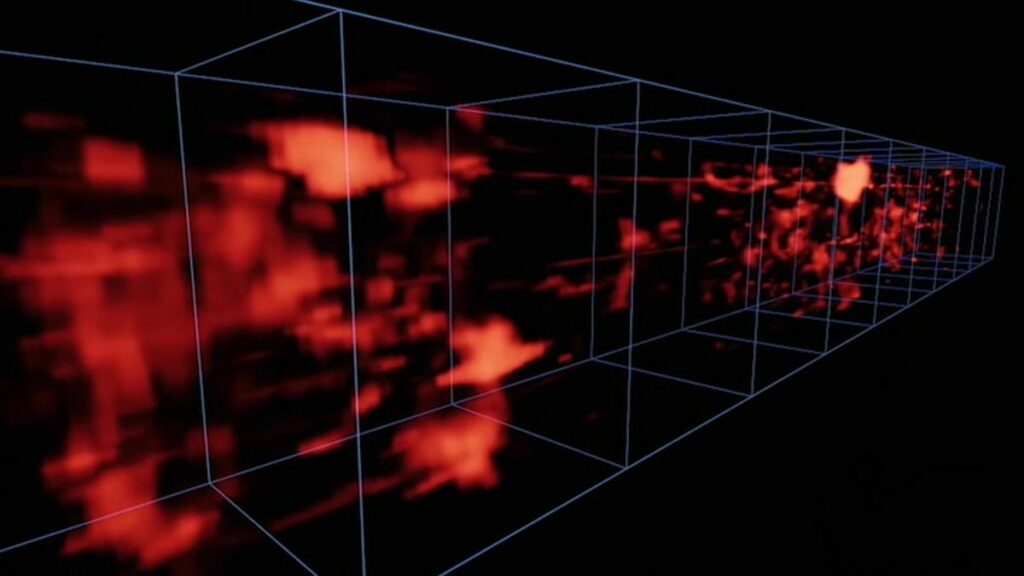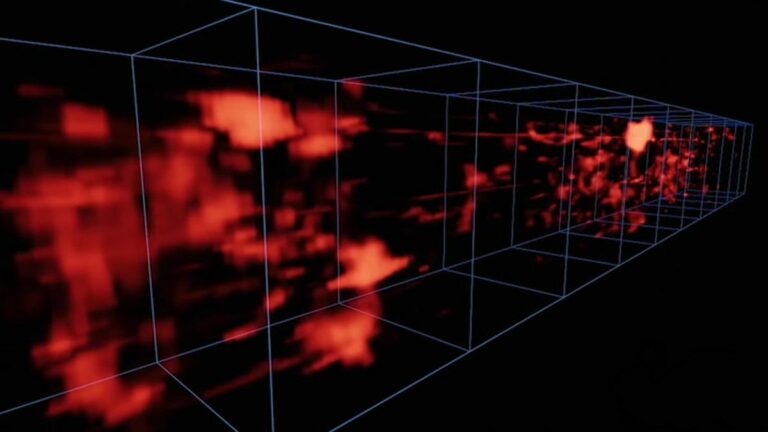Video Captures the First-Ever Glimpse of Light Connecting Galaxies in the Cosmic Web
For the first time, astronomers have directly imaged the faint glow of the diffuse cosmic web that stretches throughout the known the universe.
Astronomers announced on Thursday (Sept. 28) that they had for the first time captured the faint glow of the largest structure in the universe known as the “cosmic web,” a network of filaments that connect galaxies across the universe. Images such as these unveil valuable information about how galaxies form and evolve, and can also help trace the location of elusive dark matter that makes up around 80% of the mass in the universe.
In 2014, astronomers imaged the cosmic web for the first time using radiation from a faraway quasar, distant objects powered by black holes a billion times larger than our sun which are thought to be the brightest objects in the universe. In 2019, another imaging effort received help from young, star-forming galaxies to illuminate the surrounding cosmic web. Now, astronomers have directly imaged its light in the darkest depths of space between 10 billion and 12 billion light-years away.
“Before this latest finding, we saw the filamentary structures under the equivalent of a lamppost,” Christopher Martin, who is a professor of physics at the California Institute of Technology and the lead author of the new study, said in a statement. “Now we can see them without a lamp.”

According to cosmological simulations, over 60% of the hydrogen that was created by the Big Bang roughly 13.8 billion years ago collapsed to form a sheet, which then broke apart to make the web of cosmic filaments we see today. These filaments connect galaxies and feed them gas for growth and star formation. Although circumstantial, previous research has also suggested that galaxies form where these threads cross paths.
To capture the latest image of these crisscrossing filaments, Martin and his team used the Keck Cosmic Web Imager based at the Keck Observatory perched atop the Mauna Kea volcano peak in Hawaii. The instrument was tuned to hunt down emissions from hydrogen gas, which is the main component of the cosmic web. The two-dimensional images produced by the instrument were later stacked to form a three-dimensional map based on where the emissions were detected as they emanated from the cosmic web, according to the new study.
“We are basically creating a 3D map of the cosmic web,” Martin said in the same statement. “We take spectra for every point in an image at [a] range of wavelengths, and the wavelengths translate to distance.”
To spot those faint emissions, his team had to first battle a homegrown problem: Light pollution. The dim light from the cosmic web can easily be confused with light permeating in the Hawaiian skies, atmospheric glow and even light from our own Milky Way galaxy.
So the team decided to take pictures of two different patches of the sky in which the cosmic web was considered to be at distinct distances. Then, the team took background light from one image and subtracted it from the other, and vice versa. The result left behind just the filamentary network of the web, as predicted by simulations in 2019, according to the new study, giving astronomers “a whole new way to study the universe,” Martin said.
Scientists say images like the ones captured by the new study can help them better understand how galaxies form and evolve across eons.
This research is described in a paper published Thursday (Sept. 28) in the journal Nature.
Source: SpaceCom
Do not forget to share your opinion with us to provide you with the best posts !




0 Comments